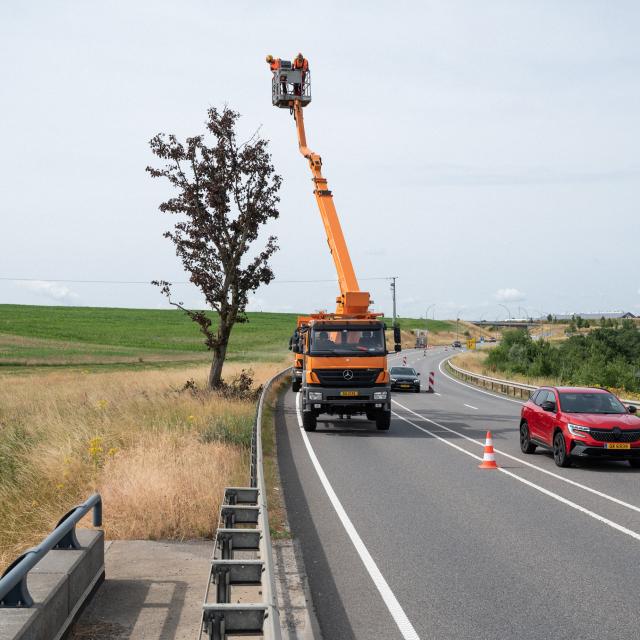The hard life of urban and street trees
By Melody Hansen, Lex Kleren Switch to German for original article
They regulate the climate in our cities and along our streets and ensure that no heat islands develop on asphalted surfaces. But it is precisely there that trees are exposed to extreme conditions that they increasingly fail to survive.
It is a cloudy summer day when our Smart car turns into a side street not far from the Park and Ride in Junglinster at the same time as the bright orange truck of the road administration (Administration des Ponts et Chaussées). Road workers are here today, to remove the scrawny branches of a tree that – like so many others – has not survived the drought of the past summers unscathed. It is not yet completely dead, but unfortunately it can no longer be saved.
"Its end is foreseeable, " says Ben Goebel, head of the tree pruning team (officially "équipe d'élagage") of the road administration. While his team spreads out on the lifting platform of the truck and around the tree in appropriate protective clothing, he explains to us exactly what work is ahead. The tree that is about to be pruned in front of us is a red-leaved Norway maple, he says. "It's a tree widespread in Central Europe that actually copes well with the climate conditions. However, this one has suffered a lot due to various factors." The thick branches are starting to dry out and the bark is peeling off – all signs that the tree is a road hazard. "That's why we have to react, we have to prevent branches from falling onto the road at all costs." So the tree-trimming team sets to work sawing off the scrawny branches in preparation for its removal. The tree will not be cut down completely today.
You want more? Get access now.
-
One-year subscription€185.00/year
-
Monthly subscription€18.50/month
-
Zukunftsabo for subscribers under the age of 26€120.00/year
Already have an account?
Log in


